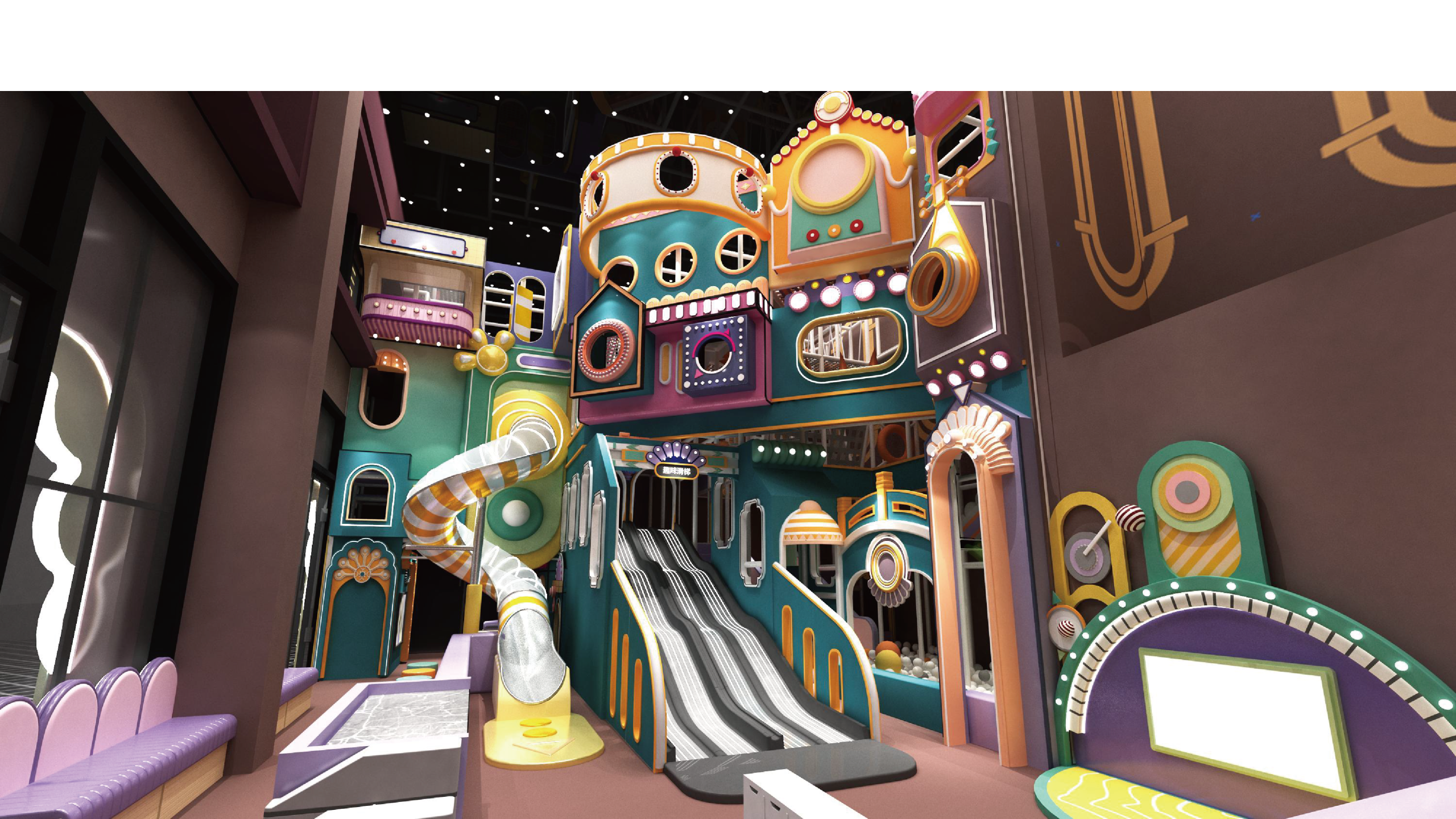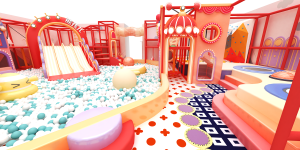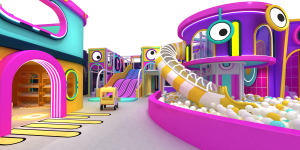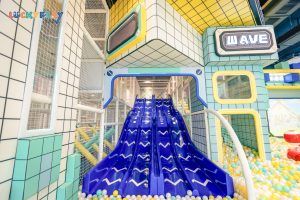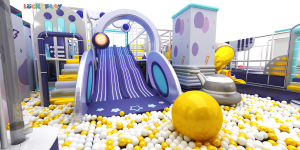Opening an indoor playground is not just about fun — it’s a business decision that requires strategy, data, and foresight. No matter how impressive your theme, how durable your indoor play equipment is, or how good your service is — it won’t matter if your location doesn’t attract families or generate stable revenue.
Let’s walk through the key steps and criteria to help you find the perfect place to build a profitable indoor playground or family entertainment center.
1. Target High-Footfall Family Zones
The golden rule: Go where the kids go.
You want to be near places where families naturally gather, especially during weekends and holidays. Consider:
🛍️ Shopping malls – Excellent visibility and year-round traffic
🏘️ Middle to high-income residential communities – Stable customer base
🏫 Schools, kindergartens, or daycares nearby – Drive after-school and weekend visits
🛒 Hypermarkets or large chain supermarkets – Shared traffic flow
🏞️ Community centers or family parks – Localized repeat visits
📌 Pro Tip: If you’re considering a mall or commercial complex, ask for customer footfall data, especially for weekends, holidays, and school vacations.
2. Prioritize Accessibility and Parking
Your customers are families — often with young children, strollers, and diaper bags. If getting to your playground is inconvenient, they simply won’t come.
Ensure the location has:
🚗 Free or affordable parking with easy stroller access
🚉 Proximity to public transportation (subway/bus within 500m)
👀 Good street visibility and signage opportunities
♿ Barrier-free access (elevator/escalator if not on the ground floor)
Bonus Tip: Install visible directional signage at nearby entrances or intersections to increase spontaneous visits.
3. Understand the Local Demographics
Before signing a lease, take a serious look at who lives nearby.
Ask yourself:
Are there enough children aged 0–12 in the area?
Are they from middle- or high-income households who can afford regular visits?
Are there other kids’ activity centers nearby, and how are they performing?
📈 Tools You Can Use:
Google Maps & Baidu Maps heatmaps
Demographic reports from local real estate agents
Conduct 2–3 days of on-site customer observation at peak times
🎯 Areas with 3–5 kindergartens/schools within 1km, or over 1000+ families within walking distance are strong candidates.
4. Evaluate the Physical Conditions of the Venue
Your indoor playground equipment may look great on paper, but your venue must match its needs. Key things to check:
🏗️ Ceiling Height:
Soft play: 3.2–3.5m minimum
Ninja course, trampoline park: 4.5–5m+
🧱 Floor Load Bearing:
At least 350–500kg/m² for multi-level structures
💡 Ventilation & Lighting:
Natural light is a plus; fresh air systems reduce odor & fatigue
🚪 Emergency Facilities:
Fire exits, sprinklers, and child-safe pathways are essential
📌 Ask for the floor plan, fire safety compliance certificate, and floor load report from the landlord before signing.
5. Leverage Surrounding Businesses
The best locations are part of a “family lifestyle ecosystem”. Look for:
☕ Coffee shops / bakeries – parents relax while kids play
👗 Children’s apparel or toy stores – shared audience
🧸 Early education centers, training schools
🎥 Cinemas, photo studios, birthday party venues
🏊 Swim schools or child gyms
These surrounding facilities can generate cross-promotions, joint campaigns, or bundled memberships.
6. Calculate the Lease Cost vs Revenue Potential
Rent is one of your largest fixed costs — choose wisely.
✅ Ideal rent-to-sales ratio: ≤15%-20%
✅ Favor long-term leases with options to renew
✅ Negotiate for:
1-3 months of rent-free renovation period
Split renovation costs (if they benefit both parties)
Flexible exit clauses
Pro Tip: Don’t just ask about rent. Ask about utilities, management fees, shared advertising charges, and hidden costs.
7. Match Location to Your Business Model
Your playground concept should guide your location decision:
🎨 High-end, themed playground → luxury malls or educational centers
🧗♂️ Large adventure or trampoline park → industrial buildings, sports zones
🧸 Parent-child soft play zone → community commercial streets or near schools
🎉 Party-centric playground → suburban venues with space for private rooms
Each concept serves different customer behaviors. The wrong location for the right idea can kill your ROI.
✅ Quick Location Evaluation Checklist (Printable)
| Criteria | Pass/Fail | Notes |
|---|---|---|
| Strong family foot traffic nearby | ||
| Public transport within 5–10 min walk | ||
| At least 1000+ target households within 2km | ||
| Parking or drop-off zone available | ||
| Ceiling height meets equipment needs | ||
| No safety hazards or legal compliance issues | ||
| Nearby complementary businesses |
Let Luckyplay Help You Get It Right
At Luckyplay, we know the location decision can make or break your investment. That’s why our team doesn’t just sell indoor playground equipment — we offer end-to-end solutions that start with market research, location analysis, and layout planning.
Whether you’re building a themed toddler zone, a competitive ninja course, or a full-scale family entertainment center, we help you maximize every square meter — and every dollar.
📞 Want to assess a location before you sign the lease? Contact our team — we’ll help you do it the smart way.
Luckyplay | Tel: +86-13924064688 | Whatsapp: +86-18613111553
🌐 www.luckyindoorplayground.com
📧 md@eluckyplay.com

